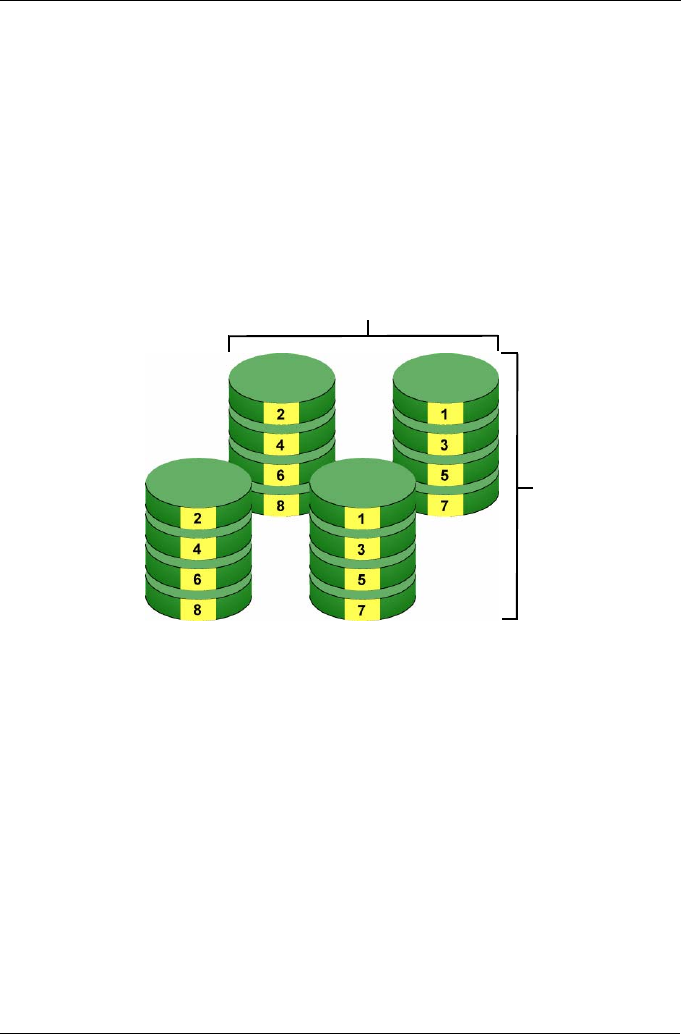
Chapter 7: Technology Background
185
RAID 10 – Mirror + Stripe
Mirroring/striping combines both of the previous RAID 1 and RAID 0 disk array
types. RAID 10 is similar though not identical to RAID 0+1. RAID 10 can increase
performance by reading and writing data in parallel while protecting data with
duplication. At least four drives are needed for RAID 10 to be installed. With four
disk drives, the drive pairs are striped together with one pair mirroring the first
pair. The data capacity is similar to a RAID 1 disk array, with half of the total
storage capacity used for redundancy. An added plus for using RAID 10 is that, in
many situations, such a disk array offers double fault tolerance. Double fault
tolerance may allow your logical drive to continue to operate depending on which
two disk drives fail.
Figure 4. RAID 10 takes a data mirror on one drive pair and stripes it over
two drive pairs
RAID 10 arrays require an even number of physical drives and a minimum of
four.
For RAID 10 characteristics with an odd number of disk drives, use RAID 1E.
Recommended applications: Imaging Applications, Database Servers, General
Fileservers.
Data Stripe
Data
Mirror
Disk Drives


















